In the seventh century A.D., the population of Britain consisted mainly of two ethnic groups relatively equal in number, collectively known as the Celts and the Anglo-Saxons respectively. The Celts can be divided into three major sub-groups, namely the Welsh (the descendants of the Britons—the native inhabitants of Britain who were driven west by the invading Angles and Saxons) in Wales; the Picts (an indigenous tribal confederation of peoples in Scotland); and the Fenians, or Scots (a Gaelic people that migrated from Ireland to Scotland around the late fifth century)—this is how they were commonly called in Britain (“Scotti”, meaning “wanderers”, referred to the Irish in general). The name “Scotland” derives from the Latin “Scotia”—“the land of the Scots”. This is because in the middle ages, Scotland as a country was developed by the Scots rather than the native Picts.
Dalriada
In the fifth century the Fenians changed their name and began to be called Gaels; they founded the kingdom of Dalriada (also spelled Dal Riata) north of the Antonine Wall, the territory of which extended to northeastern Ireland (Ulster) and groups of small islands between Britain and Ireland. By the beginning of the seventh century Dalriada had become an overwhelmingly Christian state, and the Irish Celtic rites were established in it. The liturgical traditions and practices of the Celtic Church were slightly different from those of the Roman Church. Their main theological dispute of that time was the controversy over the correct date for Pascha (the “Roman party” in Britain was represented by disciples of St. Augustine of Canterbury, the Roman enlightener of the Anglo-Saxons). The greatest and more significant ecclesiological and canonical difference was the Church administration. In Celtic Christianity all authority belonged to abbots of monasteries, while bishops had no administrative power—they lived at the monasteries, obeyed their abbots, and performed their sacramental functions, including ordinations.
The founders of monasteries in Ireland and Dalriada were held in great honor, and thus the abbots were often referred to as “comarbae” (meaning “heirs”, “successors” in Old Irish). Every abbot of Iona in Scotland was called “comarba Colum Cille” (“successor of Columba”), and every abbot of Armagh was called “comarba Patraic” (“successor of Patrick”). In the second half of the seventh century, the most influential abbot in Dalriada, Ireland and even Northumbria in northern England was St. Adomnan, the ninth successor of St. Columba and the author of the most famous version of his (Columba’s) Life. In 688, under the influence of Northumbrian monks, St. Adomnan introduced the Roman paschalia in the churches of Dalriada, though the brethren of Iona refused to adopt it.
Pictland
The largest ethnic group in Caledonia (the Roman name for Scotland) were the Picts. They inhabited most of its territory, and by the beginning of the seventh century the majority of them had become Christians. They converted to Christianity mainly thanks to the apostolic labors of St. Columba, who made numerous missionary journeys to their land in the second half of the sixth century. At the turn of the sixth century, Pictland already had a number of monasteries founded by St. Columba and his disciples, although most of the settlements where they were situated cannot be identified today. However, we have no information about the bishops who were sent to serve in Pictland, so we presume that the Church throughout the kingdom was administrated from by the abbots of Iona, where bishops actually lived.
The liturgical traditions of the Church of Pictland were identical to those of the Churches in Ireland and Dalriada. But in 663/664, the famous Synod of Whitby was summoned in Northumbria, gathering the proponents of both the Celtic and the Roman customs. At the Synod, St. Colman of Lindisfarne supported the “Celtic party”, while St. Wilfrid of York and Hexham supported the “Roman party” with its paschalia. After a dispute between Sts. Colman and Wilfrid, the Roman party ultimately won the day. After St. Wilfrid’s consecration as bishop of Eboracum (York), the churches of South Pictland, at that time occupied by Northumbrians, were under his jurisdiction for several years. At that time they used the Roman paschalia to celebrate the Resurrection of Christ.
In 681, the new Diocese of Abercorn was established in South Pictland, close to the south coast of the Firth of Forth, to provide spiritual guidance to the local population. St. Trumwine was consecrated the first bishop of Abercorn. He made efforts to introduce the Roman paschalia and other practices in all the parishes of his bishopric, but after Northumbria’s defeat in the Battle of Dun Nechtain in 685, St. Trumwine “withdrew with his people who were in the monastery of Abercurnig [Abercorn], seated in the country of the English, but close by the arm of the sea which parts the lands of the English and the Scots. Having recommended his followers, wheresoever he could, to his friends in the monasteries, he chose his own place of residence in the monastery, which we have so often mentioned, of men and women servants of God, at Streaneshalch [Whitby].”1 He reposed there many years later, unable to give spiritual guidance to the Church of Pictland, which, therefore, reverted to its Celtic practices and upheld them for a quarter of a century after him.
Wales
The most numerous Celtic people in seventh century Britain were the Britons, or Cymry, who were brutally massacred in great numbers by the invading Angles and Saxons and pushed from their native lands. Resisting the aggression, the Celtic tribes remained safe in the west from Anglo-Saxon domination and formed small British kingdoms in Cornwall (Dumnonia), Wales (originally called Cymru, or Cambria) and Strathclyde (or Cumbria), which stretched to the southwest of Scotland. Though a distinct entity, Wales (the largest of these) was not a monolithic state. It was divided into several small independent kingdoms which acted in alliance with each other. Among them were Gwynedd (NW Wales), Dyfed (SW Wales), and Powys (E Wales).
The seventh century, like the previous sixth century, was marked by the Celtic Britons’ stout resistance to the Anglo-Saxons’ steady onslaught. They experienced both victories and defeats in this struggle. Yet one of the battles proved fatal for Cambria. It was the Battle of Legacastir [the Roman name of present-day Chester] which took place in about 616. In it the joint army of Powys and several smaller allied kingdoms fought against the Northumbrians. However, the Anglo-Saxon Chronicle dates this battle to 604. The Chronicle’s entry for 607 reads: “Ethelfrith led his army to Legacastir; where he slew an innumerable host of the Welsh; and so was fulfilled the prophecy of St. Augustine, wherein he saith ‘If the Welsh will not have peace with us, they shall perish at the hands of the Saxons.’”2
St. Bede of Jarrow, giving his account of the Battle of Legacastir, refers to the British soldiers and priests who came with them as “heretics” only because of their way of calculating the date of Pascha and other minor liturgical differences: “Their priests … came together to offer up their prayers to God for the soldiers, standing apart in a place of more safety. Most of them were of the monastery of Bangor, in which, it is reported, there was so great a number of monks, that the monastery being divided into seven parts, with a ruler over each, none of those parts contained less than three hundred men, who all lived by the labor of their hands. Many of these, having observed a fast of three days, resorted among others to pray at the aforesaid battle, having one Brocmail appointed for their protector, to defend them whilst they were intent upon their prayers, against the swords of the barbarians. King Ethelfrith being informed of the occasion of their coming, said, ‘If then they cry to their God against us, in truth, though they do not bear arms, yet they fight against us, because they oppose us by their prayers.’”3
Thus, in modern legal language, the King of Northumbria refused to recognize these priests as noncombatants. We read further: “He, therefore, commanded them to be attacked first, and then destroyed the rest of the impious army, not without considerable loss of his own.”4
Here St. Bede’s Anglo-Saxon patriotism and religious intolerance go over the top… For him the “impious army” was not the horde of the pagan Angles but the army of the Christian Britons, though the only major difference between the Celtic and the Roman traditions (St. Bede belonged to the latter) was in the way the two Churches calculated the date of Pascha and tonsured monks. “About twelve hundred of those that came to pray are said to have been killed, and only fifty to have escaped by flight. Brocmail turning his back with his men, at the first approach of the enemy, left those whom he ought to have defended, unarmed and exposed to the swords of the enemies.”5 And St. Bede concludes that account, gloating over their defeat: “Those perfidious men… had despised the offer of eternal salvation.”6 Interestingly, elsewhere in his wonderful book St. Bede displays a much more tolerant attitude towards other Celts, namely the Scots (the Irish) and the Picts. Perhaps he felt a personal antipathy to the Britons about which we know nothing. By the way, the Angles and Saxons contemptuously called the Britons “the Welsh”, meaning simply “foreigners” [though, in effect, they themselves were foreigners! Hence “Wales” means “the land of the foreigners”, and “Cornwall”, originally “Corn-Wales”, means “the horn”, or “promontory, inhabited by the foreigners.”—Trans.]. The victory in the Battle of Legacastir gave Northumbria easy access to the Irish Sea and so the Celtic world of Britain was then largely disintegrated: Cambria (Wales) and Cumbria (or Hen Ogledd, meaning “the old north”) were thus separated from each other.
Though attacks of the Angles and Saxons continued, the Britons did manage to regroup in the west of the island. In some cases they took advantage of the feud between some Anglo-Saxon kingdoms. Thus, King Cadwallon of Gwynedd, in alliance with the pagan King Penda of Mercia (sealed by Cadwallon's marriage to Penda's sister, Alcfrith, according to later sources) attacked Northumbria, which then was ruled by St. Edwin, who had converted to Christianity. Earlier Cadwallon and St. Edwin had been friends, but after Edwin’s return to his homeland and succession to the Northumbrian throne their friendship changed into hostility. So the Britons of Gwynedd took advantage of the feuds between some Anglo-Saxon kingdoms in order to regain independence and get even with the Angles of Northumbria, their “age-old enemies”. In about 630, the joint armies of Gwynedd and Mercia defeated the Northumbrians in the Battle of Cefn Digoll (near present-day Welshpool). But the Battle of Hatfield Chase that took place on October 12 (some give October 14), 633, was a significant turning point in the struggle between the Britons and the Anglo-Saxons.
According to St. Bede: “A great battle being fought in the plain that is called Heathfield, Edwin was killed on the 12th of October, in the year of our Lord 633, being then forty-seven years of age, and all his army was either slain or dispersed. In the same war also, before him, fell Osfrid, one of his sons, a warlike youth.”7 Thereupon, according to St. Bede, though he may have exaggerated as he was very much biased against the Britons, “a great slaughter was made in the church or nation of the Northumbrians; and the more so because one of the commanders, by whom it was made, was a pagan, and the other a barbarian, more cruel than a pagan; for Penda, with all the nation of the Mercians, was an idolater, and a stranger to the name of Christ; but Cadwallon, though he bore the name and professed himself a Christian, was so barbarous in his disposition and behavior, that he neither spared the female sex, nor the innocent age of children, but with savage cruelty put them to tormenting deaths, ravaging all their country for a long time, and resolving to cut off all the race of the English within the borders of Britain.”8 However, before that time it was the Angles and Saxons that had been slaughtering the Celtic Britons living in Britain for a long time, literally striving to exterminate them. Therefore, by cruelly murdering inhabitants of Northumbria the Britons were trying to wreak vengeance on their oppressors. This hostility was largely explained by the fact that the Angles and Saxons on converting to Christianity regarded the native Britons as “heretics” on account of their controversy over the proper calculation of Pascha, whereas, according to St. Bede, “it being to this day the custom of the Britons not to pay any respect to the faith and religion of the English, nor to correspond with them any more than with pagans.”9
Soon after that, Cadwallon fell in battle with the army of Angles under St. Oswald. On returning from Dalriada where he had been in exile, St. Oswald with his small army attacked King Cadwallon’s band at Cad-ys-Gual (“Heavenfield” in English). The battle resulted in a decisive victory for St. Oswald, and Cadwallon was defeated and killed. Now the territories that Gwynedd had won back from Northumbria were lost. Thenceforth Mercia (with which it had allied not long before) not Northumbria posed a major threat to the kingdom of Gwynedd.
In 634, following the mentioned battle, the throne of Gwynedd was seized by Cadfael ap Cynfeddw (that is, “Cadfael, son of Cynfeddw), while Cadwallon’s one-year-old son St. Cadwaladr Fendigaid was hidden for a time. About 655, St. Cadwaladr at last ascended the throne of Gwynedd. He was loved as a pious, peaceful ruler, and before his death he took monastic vows. St. Cadwaladr died during the devastating plague of 664 [although, according to the majority of sources, this saint died of another terrible plague that swept the country eighteen years later, in 682.—Trans.) and was canonized after his death.
The period between the fifth and the eighth centuries was called “the age of saints” in Wales. The most venerated saint of the Welsh land is its patron saint—St. David, Archbishop of Mynyw (Menevia). His feast day, March 1 (he is venerated in Orthodoxy on March 14), is still a national holiday in Wales. He was a champion of the Orthodox faith, a missionary, founder of a large number of monasteries in different parts of Britain and even in Brittany. His principal monastery of Mynyw (now St. Davids in Pembrokeshire) became his archbishopric as well. St. David introduced a very strict rule at his monastery. Manual labor was compulsory and always flourished there. Any conversations, except for very necessary ones, were forbidden. The brethren were not allowed to use horses or oxen in plowing, so they would always drag the plow through their fields themselves, while practicing unceasing prayer. The food of the brethren consisted of bread, vegetables and water. Meat and milk products, alcohol and even fish were excluded. St. David was often referred to as “aquaticus” (“water-man”) because he lived exclusively on bread and water. According to one version, St. David reposed in 589, and according to another version, it was in 601.
Among those who followed in St. David’s footsteps in the seventh century was St. Beuno. He was born in the kingdom of Powys and was related to the royal family. Driven by love for God and an intense desire to dedicate his life to the service of Christ, St. Beuno as a very young man joined Bangor Monastery, which had been founded by St. Deiniol. It was there that he received the tonsure and was ordained. Later he was sent to found new monasteries in the kingdom of Gwynedd. About the year 616 the saint established a monastery at Clynnog Fawr. After that, following the tradition of the Celtic saints, Beuno undertook numerous missionary journeys across Wales and some early English kingdoms. In Wales he built around ten monasteries, which became seedbeds of holy monks and ascetics in the Celtic tradition. Among the monastic communities established by this saint of God were those at Llanfeuno and Llanymynech. “Ancient traditions say that St. Beuno, as a wandering preacher, used to pay visits to the monastic islands in Wales at Bardsey and Anglesey. On Anglesey he may have founded a church, or, most likely, a monastery, in a place called Aberffraw… St. Beuno for some time led a solitary ascetic life in Somerset in southwest England, where a tiny and lovely church in Culbone—which stands to this day—served as his a cell. This is the smallest active parish church in all England. It is dedicated to St. Beuno… Culbone church is located in a very quiet and remote place right beside the Bristol Channel, surrounded by forest… This is a typical setting for the ancient Celtic saints.”10 The Venerable Beuno reposed about 640 at his monastery of Clynnog Fawr and was interred there. A great number of miracles occurred at his holy relics. The saint became a special patron of sick children. Veneration for St. Beuno was so strong that it continued after the disastrous Reformation, when the veneration of saints was officially prohibited all over Britain. Thus, even in the Protestant Wales, “children who suffered from many diseases were brought and led to the holy well, bathed in it and left for a night inside the chapel on the grave or near the grave of the holy man Beuno; and many of them were miraculously cured.”11
St. Winifred, St. Beuno’s niece, had an Anglo-Saxon name and was probably of mixed origin. In her youth the saint wished to become a nun and took monastic vows. Little reliable information about her life survives, but, according to the most popular tradition, one Welsh prince was stricken with the desire to have her in marriage. Since the saint was determined to preserve her virginity and lead a monastic life, the prince decided to take her by force. Winifred refused his advances, and he struck off her head on the spot. A healing spring gushed forth where her head had fallen. That place was called Trefynnon in Welsh and Holywell in English. According to tradition, through the prayers of St. Beuno his holy niece came back to life. Winefred then returned to Gwytherin (where she had taken the veil), established a convent there, and became its abbess. The holy maiden reposed in about 660. In time her holy relics were translated to Shrewsbury Abbey (now in county Shropshire, western England), where countless miracles occurred through her intercessions. Both Shrewsbury Abbey and the holy well at Trefynnon remained great pilgrimage centers throughout the middle ages.
Another celebrated saint of seventh century Wales is the Venerable Melangell. Born in Ireland, she sailed to Wales where she lived as an anchoress in solitude amid dense forests of Powys for fifteen years. One day King Brochwel Ysgithrog during a hunting trip came upon a clearing in which a beautiful maiden was standing deep in prayer. According to the Life of St. Melangell, “a hare that was being pursued by the hounds was lying beside the holy woman and facing the dogs down boldly. The hounds submissively ran aside and stopped, unable to move.”12 Amazed by the piety of the anchoress, Brochwel donated a parcel of land to be used by her to found a convent. In due course the maiden of God founded a community of nuns, became its first abbess, and ruled it until her death.
Another notable figure of “the age of saints” in Wales is St. Tysilio, a son of the aforementioned King Brochwel, to whom the Welsh chronicle of kings is also attributed. As a very young man Prince Tysilio went to study at the monastery of Meifod, where his spiritual mentor was the holy hermit and abbot Gwydfarch. After that, Tysilio lived for seven years on an islet near the Island of Anglesey in the Menai Straits (a channel separating Anglesey from the mainland of NW Wales). This isle was later called Ynys Dysilio (“St. Tysilio’s Island”) after him. On his return to Meifod, St. Tysilio became its abbot and afterwards established a number of other monasteries in various parts of Wales—for example, in Clwyd, Cardiganshire, and Dyfed.
However, the man of God could not avoid temptation. When St. Tysilio’s brother died, his widow wished to marry him and make him the King of Powys. The holy man turned down both proposals, and so for political reasons soon Meifod Monastery was persecuted by the royal family. Then St. Tysilio resolved to leave his homeland. Thus, taking a small group of monks with him, the saint embarked for Brittany, where he eventually founded the monastery of St. Suliac in 617 and became its first abbot. St. Tysilio reposed at St. Suliac in about 640.13
Witnesses to the Church life and ascetic labors of a cloud of saints in Wales during its period of independence are the surviving ruins of early churches, church enclosures and monastic cells, ancient cemeteries with early gravestones, stones with ogham and Latin inscriptions (which had been erected at crossroads and later remained in their locations or moved to museums), and holy wells that have been venerated by pious people since time immemorial. The Church structure, liturgical rites, specifics of piety, Christian customs and everyday traditions of Wales had much in common with those of another Celtic country—namely, Ireland. And in many ways, all of them made this far western corner of the Christian world very close to the Christian East.

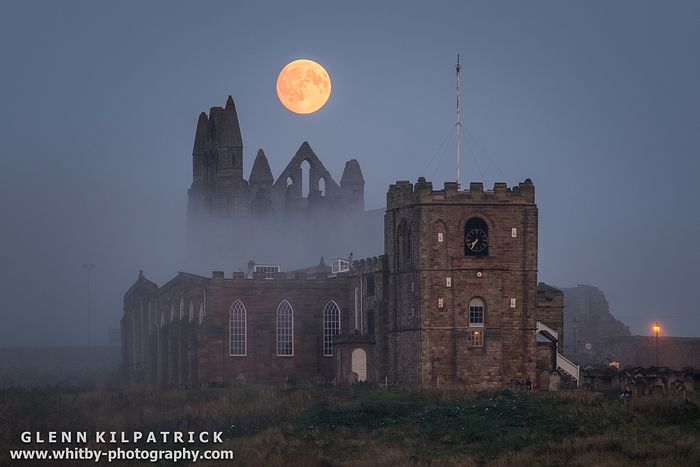

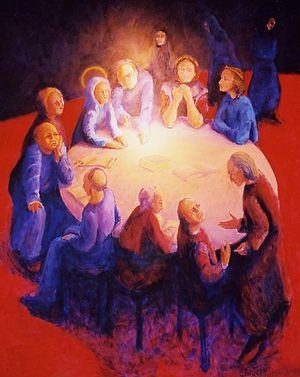
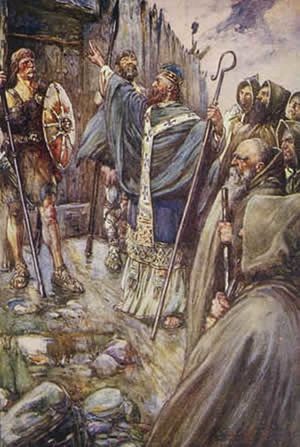
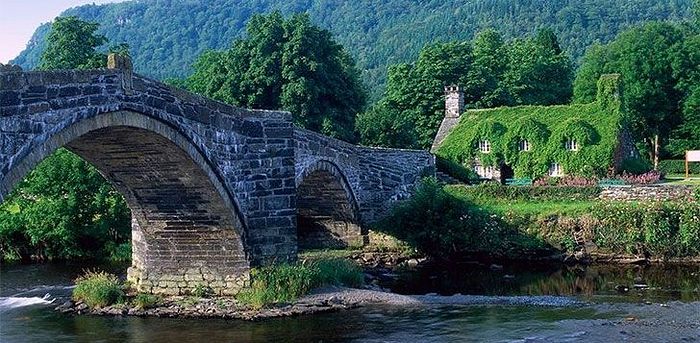
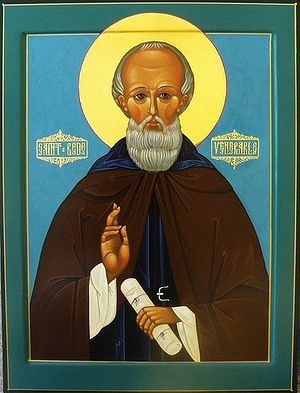
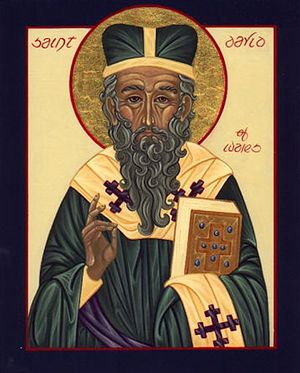
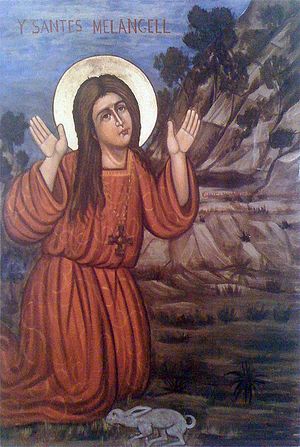
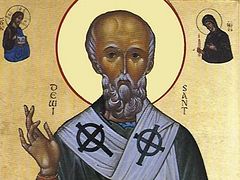
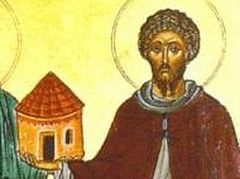


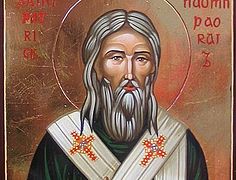
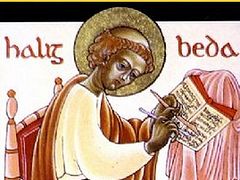
I want to say how much I have enjoyed articles by Dmitry Lapa and this one is no different. I noticed that many references came from the book "Lives of the Saints who shown forth from the Lands of Britain and Ireland" Are there any plans to translate that book into English? I am sure it wold sell well in the America and Canada since many converts to Orthodoxy have British and Irish ancestry and they are always interested in finding more about their Orthodox "family history". Please consider translating and publishing this book in English since it would such a blessing to English speaking Orthodox.